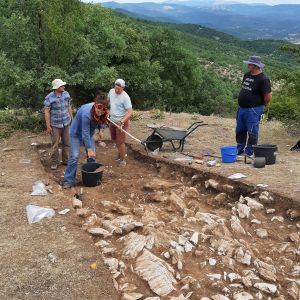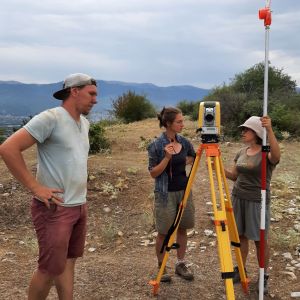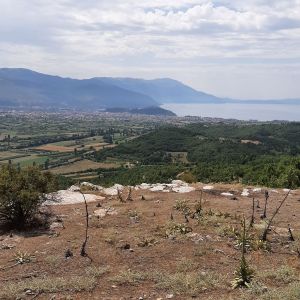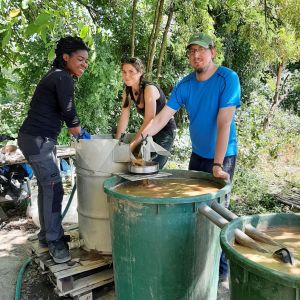Summer School of Archaeobotany in Ohrid (Macedonia) participates in an international project
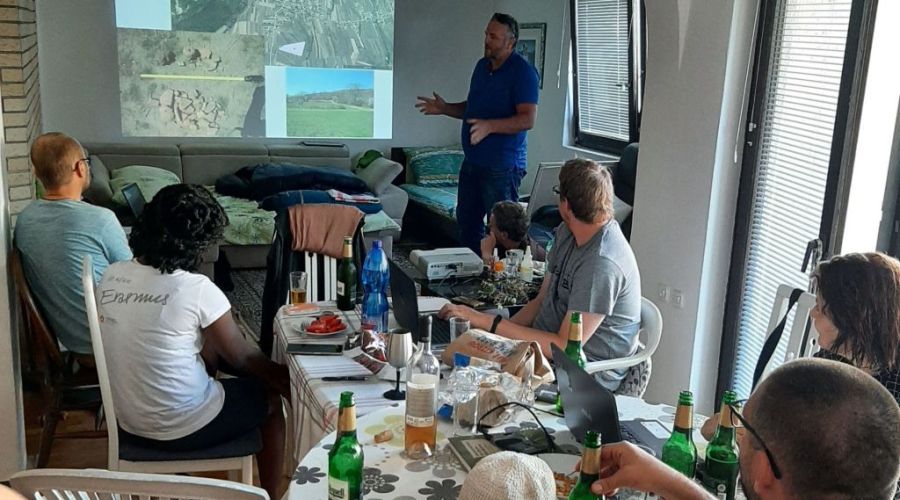
Just like last year, the Summer School of Archaeobotany, which the Laboratory of Archaeobotany and Palaeoecology and the Institute of Archaeology of the University of South Bohemia in České Budějovice have been organising for several years, is taking place in Ochrid, North Macedonia, near the lake of the same name.
Under the auspices of the National Archaeological Museum in Skopje and in cooperation with the Institute for Classical Archaeology of Charles University in Prague, students of the University of South Bohemia are working on archaeological research at a number of interesting sites of prehistoric and ancient antiquity, taking samples of soil and materials which they float through using special equipment. Under the supervision of specialists, students separate old charred material from contemporary plant fragments and prepare it for long-term laboratory examination and scientific evaluation.
For several years, students from both Czech universities are part of the international project Frontier studies in the Ohrid region, which has been researching the consequences of the ‘Ohrid disaster’, a powerful earthquake from the end of the second millennium BCE. The catastrophic event, which has been published by members of the international team at Ohrid, turned the city on a rock massif into an island, surrounded it by the waters of a lake and rebuilt the structure of the local settlement within a broad agricultural hinterland. Archaeologists, geologists, paleoecologists, and specialists in historical environmental change from the Czech Geological Survey and the Faculty of Sciences at Charles University are now focusing on this settlement change during the period between the Bronze Age and the Iron Age.
Students of the Summer School and their Prague and local colleagues worked at two interesting archaeological sites in Ohrid in August. Both are situated above the level of the plain of Ohrid, the site of the Bronze Age to Iron Age is even on the top of a nearby mountain. It is a hill fort with a massive stone wall. The second site dates from the Roman period when it formed part of a rural agricultural settlement. Archaeologists can document numerous finds of artefacts and building structures at both sites, while archaeobotanists have recovered samples of domesticated plants and charred wood fragments. The archaeobotanical finds will also serve as a source of dating through radiocarbon analysis. Laboratory research on botanical findings will continue in the Laboratory of Archaeobotany and Palaeoecology in České Budějovice until the middle of next year.
Text and photo:
doc. PhDr. Jaromír Beneš, Ph.D., Laboratory of Archaeobotany and Paleoecology, USB Faculty of Arts and the FAR USB Institute of Archaeology in České Budějovice
Marek Verčík, Ph.D., Institute for Classical Archaeology, Faculty of Arts, Charles University in Prague
